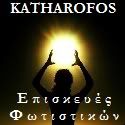Το βίντεο που πρέπει να δείτε!!! Poseidonia - The Greek City!

The Greek period in Poseidonia lasted from the foundation around 600 BCE to around 400 BCE. The literary sources are completely silent about Poseidonia in this period, so all that is known about the city and its people comes from archaeology.
Little is known about the city plan of Poseidonia, since the currently visible plan is of Roman times, but it is fairly certain that the main road was the Via Sacra, which later became the cardo maximus in the Roman period. It leads from the S. gate, the Porta Giustizia, to the N. gate, the Porta Aurea, and it makes a few turns along the way, which is rather unusual. The road was not paved.
The main square of a Greek city was the agora, and the agora of Poseidonia has been identified about halfway along the Via Sacra. Close to the agora the bouleuterion, the circular meeting place of the city council, has been found.
In the S. part of the excavated area, near Porta Giustizia, a huge area was set aside as a Heraion, a enclosed sanctuary dedicated to Hera, the wife of Zeus. Here the settlers build the first major monument, the so-called Basilica or the Temple of Hera I, c. 550 BCE, build in the archaic doric style.
In 510 BCE Sybaris, the mother city of Poseidonia, was sacked and destroyed at the hands of Croton, and it appears that sybarite refugees arrived in Poseidonia at this time. These refugees have been associated with the apparent rise in building activity in the following decades.
Just around 510 BCE an enigmatic construction was made on the Via Sacra, close to the agora. It is a half buried, underground shrine without an entrance. Inside rich grave goods were found, but no inscriptions, so it is generally assumed it is aheroon, the symbolic tomb of the heroic founder of the city.
The second temple to be build was the Temple of Athena, sometimes called the Temple of Ceres, just N. of the agora on the highest point within the city. It is from c. 500 BCE, in an archaic doric style closer to the classical than the first temple. Adjacent to this temple stands a votive Doric column from around 550 BCE.
The last of the great temples is the Temple of Hera II, also called the Temple of Neptune. This temple, the largest of the surviving temples, from about 470-460 BCE, is stylistically much closer to the classic doric style, but it retains some distinct archaic traits. It stands just besides the first Temple of Hera, build almost a century earlier, and was probably meant to replace it.
Σε αυτό το λίνκ ,μπορείτε να δείτε πλήθος φωτογραφιών του περιβάλλοντος χώρου αλλά και του μνημείου!
The Temple of Hera I, 550 BCE
The sanctuary of Hera, the Heraion, with the two great temples also contained smaller temples, altars and sacred ponds. One temple might have been demolished by the Roman settlers when the Forum was build over a part of the sanctuary.
The name Poseidonia means the city was dedicated to Poseidon (Neptune), and Poseidon regularly appears on coins issued by the city, but no temple or sanctuary dedicated to Poseidon has been found. If could be located in the unexcavated parts of the city, outside the wall or closer to the sea.
South of the city, outside the Porta Giustizia, at the Località Santa Venere, a sanctuary of Aphrodite (Venus to the Romans) has been found. This sanctuary remained in use until the end of the city. Interesting to note how the name of the deity have survived in the name until now.
Finds of pottery, glassware and amphorae from Magna Graecia, from Greece itself and even from Egypt shows that Poseidonia had commercial relations throughout the Greek world from the very beginning.
Poseidonia struck its own coins from about 550 BCE, often showing Poseidon with the trident raised. At first the coinage was simple, using the incuse technique where the impression made on one side of the coin shows through on the other side. Just about the time of the arrival of the sybarite refugees the coinage changed, abandoning the incuse technique and adding the bull of Sybaris on the reverse.
Some of the necropolises of Poseidonia has been discovered in the surrounding countryside. A normal tomb was a rectangular hole cut in the rocky ground, sometimes lined internally with stuccoed travertine slabs. The cover would be a slab of travertine or, less often, made of tiles. Burial was by inhumation.
The grave goods found are modest if present at all. The men would often have with them a strigil for scraping off dirt and a small alabastron, an alabaster bottle for oil, both associated with athletic activities. The women most often have a lekythos, which is a small bottle for perfumed oil, or a skyphos, a drinking cup, with them. The vases found are most often in the red figure style from Athens.
Some tombs were painted on the inside with scenes from the funeral and of the passage of the dead into the underworld. One particularly richly decorated tomb is the so-called Tomb of the Diver. The sides of the tomb was decorated with delicate frescoes of funerary banquets, and the inside of the lid has a picture of a man diving into the water from a tall structure, representing a plunge into the afterlife.
No weapons have been found in the tombs from the Greek period. This together with the apparent equality of the tombs has been interpreted a sign of a non warring, democratic society with limited social differences, but it could also mean that the graves of the upper class has eluded discovery. Nothing certain is known about the type of government of the city.
sights.seindal.dk/sight/86_Paestum-1.html πηγή βίντεο : Black Mpeee from askordamiktaros on Vimeo.















































Δεν υπάρχουν σχόλια:
Δημοσίευση σχολίου
Τα σχόλια για ενα Μπλογγερ,είναι οπως λέει και ο Aaton ,οτι είναι το χειροκρότημα για τους καλλιτέχνες.Αφήστε το σχόλιό σας το χρειαζόμαστε.